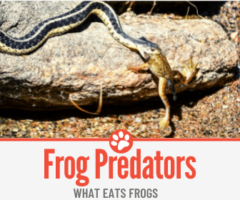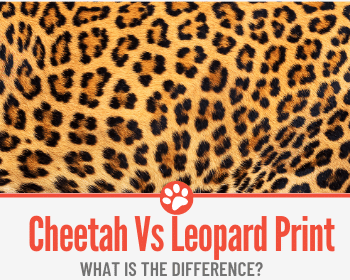 Cheetah and Leopard print has been popular in the fashion world for years.The beautiful, natural designs have been admired across the world.
Cheetah and Leopard print has been popular in the fashion world for years.The beautiful, natural designs have been admired across the world.
Even the Queen, was photographed back in 1952 sporting a Leopard print coat. This style is not just for the rich and famous though.
When I was growing up, my Aunt had several items with this design. Everything from an ash tray to her shower curtain! Come to think of it, I have no idea if this was Cheetah or Leopard print.
Cheetah vs Leopard Print
The Cheetah and Leopard print difference is quite apparent when you compare them. This may not be as noticeable to the untrained eye, or when you spot the coats from a distance on safari, for instance. Both are regularly confused with one another, even though they are quite different.
Cheetah print consists of solid black dots with an orange/ yellowish coat. A leopard on the other hand has rosette shaped spots with a cream-yellow coat.
Cheetah and Leopard print is not always used with the animal’s natural coat colour. Several products are made with a variety of background colours.

Cheetah Vs Leopard Spots
The spots on a Cheetah are evenly spaced, circular, and jet black. They typically have a circumference of 2-3cm.
Leopard spots are irregular and cluster together to form a rosette shape. Leopards in East Africa have circular rosettes while those in Southern regions of Africa have slightly square shaped ones.
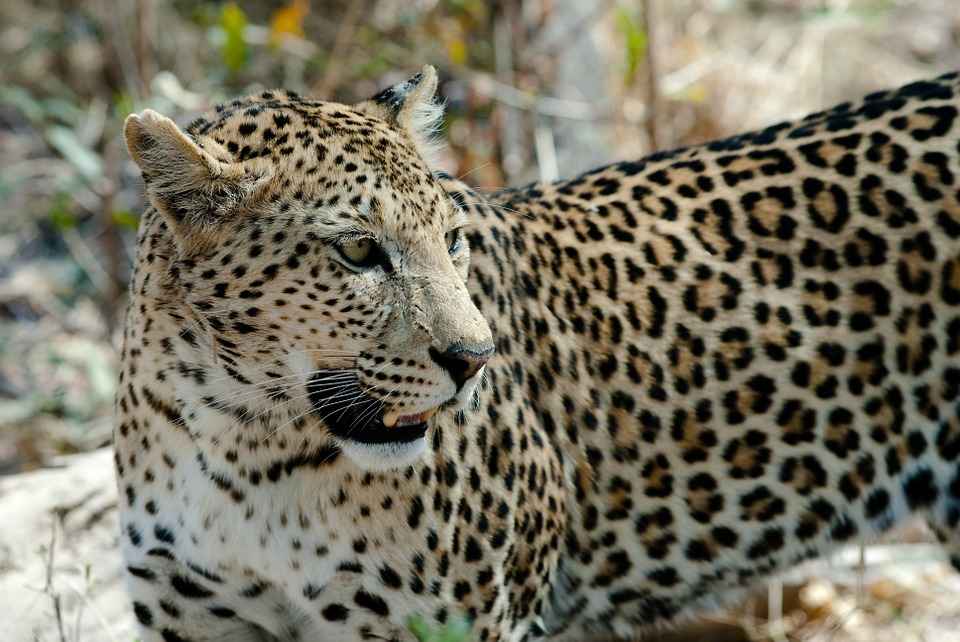
What Is the Difference Between A Cheetah & Leopard?
Activity time
Cheetahs hunt in daylight hours. Leopards are nocturnal and hunt at night. The ability to hunt at night is due to their large pupils which allows more light to enter. This enables them to see shapes in the dark and detect movement.
Claws
Cheetah: Semi-retractable which is uncommon in creatures with claws. This characteristic aid their acceleration, allowing them to reach high speeds without slipping. Cheetahs paws are surprisingly more like dogs than cats. They will use their paws to trip their fleeing prey.
Leopard: Does have retractable claws. Known for their climbing skills, they will extend their claws when climbing a tree.
- A cheetah’s heart beats at 170 per minute, when in full sprint.
Weight/ Size
Cheetah: Usually weighs anything from 21-72kg. An adult male has a length of 1.1-1.5m.
Leopard: Weighs between 37-90kg. The males are usually 0.9-2m in length and are 50% bigger than the females.
Head/ Face
A cheetah’s skull is relatively compact & proportionate to the rest of the body has a length of around 163-203mm.
Cheetah’s have a black ‘tear line’ on their face, running down from both eyes. This is to protect their eyes from the Sun. According to Zulu legend, a lazy hunter watched a mother Cheetah hunting springbok for her cubs. The wicked man thought to himself ‘if I had my own Cheetah, I could teach it to hunt for me and not have to hunt in this hot sun’. The man stole the mother cheetah’s 3 cubs. When she returned to find them gone, she cried and cried, leaving the distinctive black stains on her face for eternity.
- According to experts, a cheetah has only a one in ten chance of catching prey that is not taken by surprise. This number drops to 1 in 2 though, if the cheetah can sneak up on its victim.
Hunting
Cheetahs hunt at dawn or dusk in most cases. They will use vantage points such as termite mounds to observe their prey. When the cheetah hunts it will try to get as close to their prey as possible. Once within sprinting range (50 metres), they will use their superior speed to catch their meal.
Typically, cheetahs eat their pray quickly in a secluded area. This is to prevent the competition such as lions or hyenas stealing it. The cheetah won’t be able to fend off these predators due to being outnumbered or out matched in strength and size.
Leopards also stalk their prey and try to get as close as possible. Once within about 10 metres of their target they will give chase. Using their claws to injure or kill they will bite the throat to finish off their victim.
Leopards use their brute strength and climbing abilities to drag their prey up a tree for them to devour. This will keep their meal away from other predators.
Numbers In The Wild
It is estimated there is only around 7000-10000 Cheetahs left in the wild. This is around a 90% reduction in their numbers. They inhabited all of Africa in the past and a majority of Asia. Now only found only in 6 African countries: Angola, Namibia, Zimbabwe, Botswana, S. Africa and Mozambique. They are also approximately 50 left in Iran. Conservationists are calling on them to be recognized as an endangered species.
Leopards have approximately 70000 left in the wild. Some species of leopard have it worse than others. The Amur Leopard, which inhabits North East China and Russia has been hunted ferociously.
This combined with logging and development on their usual habitat, has had a catastrophic effect on this beautiful animal.
- Tiger fossils found in China were over 2 million years old!
Speed
So, Who is faster leopard or cheetah?
Cheetahs are the fastest land animals on the planet. They can reach speeds of up to 75mph. This is approximately twice the max speed a leopard can reach (35-37mph).
A female Cheetah named Sarah, who is held at the Cincinnati Zoo in Ohio was recorded running a speed of 61mph over 100 metres, giving a time of 5.95 seconds. For comparison, Usain Bolt ‘the fastest human on Earth’, holds the record for the fastest time in the 100 metres race at 9.58 seconds. Almost twice that of the Cheetah.
- In one stride a cheetah can cover over 7 metres and more than 25 metres in one second.
- Cubs
A Cheetah’s newborns will generally stay with her until they are about 18 months. Siblings may stay together for a further 6 to 8 months. Before the females eventually leave and go to live on their own.
The Mother will hide her cubs in long grass or in holes in a tree. This is to protect them from predators. Even doing this though, it is estimated that 70% of cubs are killed by Hyenas & Lions, among other predators.
Leopard cubs are about the size of an apple when first born. They are basically blind. The mother will have more than one den. This is to reduce the chance of a predator finding her young, they will be moved every 2/3 days.
When they are 18 months old, they will be able to catch rabbits and other small game.
After observing and being taught hunting techniques they will eventually go off on their own. They will stay with their mother for around 2 years.
Kill Rate
A cheetah in the wild kills between 30 to 150 animals per year. This is dependent on available prey, the cheetah’s size and how many times it hunts.
They need around 1-3kg of meat per day to stay healthy. Researchers studying this in the Serengeti back in 2012, conducted a survey. Out of 192 pursuits, cheetahs killed 114. This gave them a 58% success rate.
A success of a leopard’s kill varies. In North East Namibia they have a successful kill rate of around 38%, but in the Kalahari, it is only 14%. The 38% is a higher success rate than that of a lion.
Female leopard’s who have cubs have a kill rate of approximately 28%. A lone male is around the 14% mark.
- Cheetahs have excellent eyesight in daytime but poor night vision, compared to other cats
Aggressiveness
So, Which is more dangerous cheetah or leopard? Cheetahs have been kept as pets by royalty, pharaohs, and the wealthy for thousands of years. In more recent times they are kept by rich Arabs in the United Arab Emirates.
You have probable seen the viral videos of them, driving through the streets of Dubai, with a leashed cheetah in the driving seat.
There has been no reported case of a Cheetah attacking a human being. You are more likely to be attacked by a dog than a Cheetah.
Cheetahs don’t bite off more than they can chew, as the saying goes. A human being will be too big of a threat. They will even scurry away if someone makes eye contact with them in some cases.
- Female lions are the main hunters
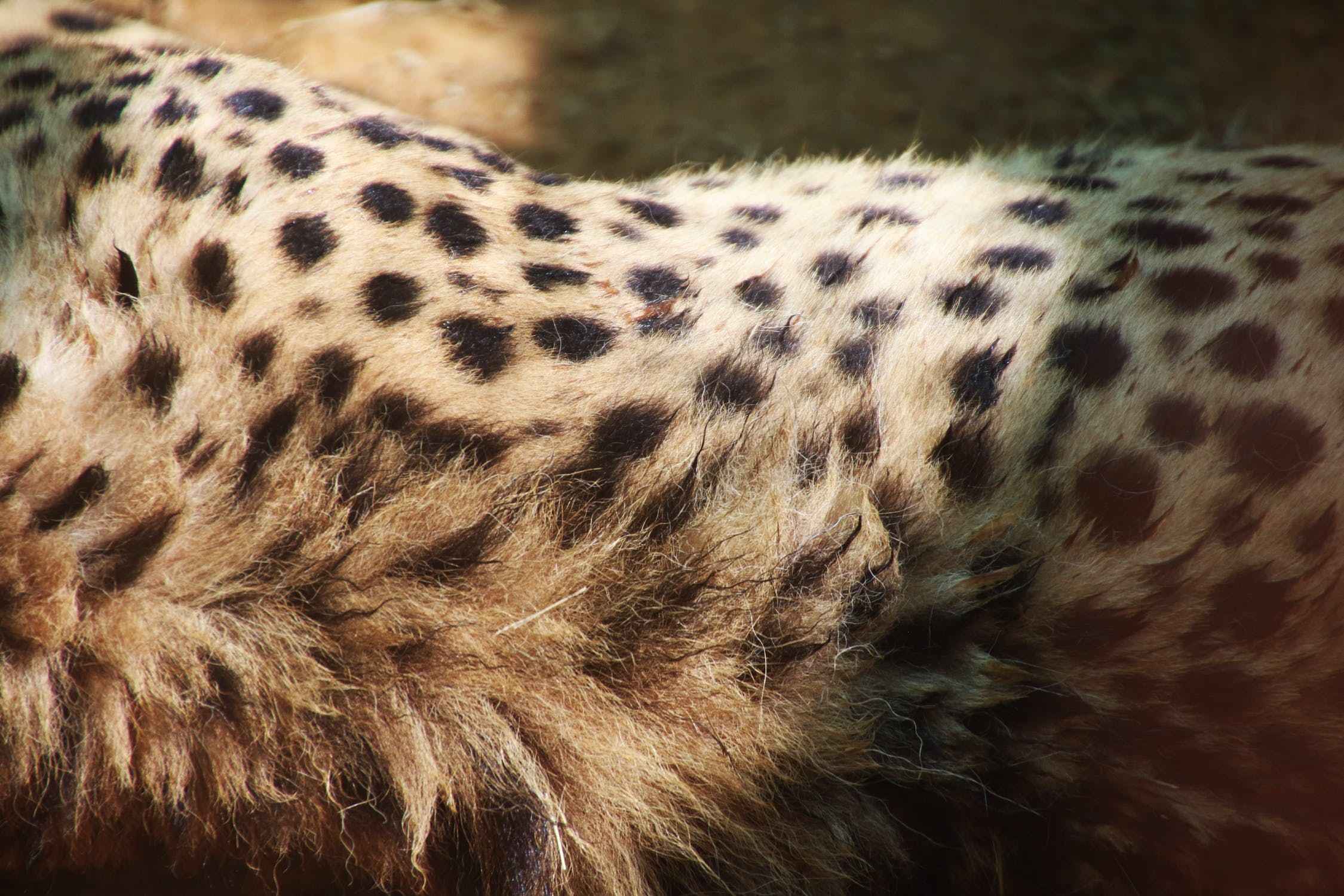
Is Cheetah and Leopard the Same?
So, what do Cheetahs and Leopards have in common besides they almost similar prints ? Some similarities between both is due to convergent evolution.
This is where some species evolve differently but due to their environment end up having common traits in their appearance. Sharks and dolphins for example. Cheetah print vs Leopard print on their coat is due to this, as they both have evolved for a camouflage purpose.
Prey
Areas where they both inhabit, the prey they eat is usually the same i.e. gazelle, rabbit, and antelope. Well, to word it better, Leopards can pretty much hunt anything a Cheetah can, plus more! Due to their strength, Leopards are more likely to take on larger prey such as buffalo.
- Related: Both Cheetah and Leopard are in the Conical Toothed subcategory of Felidae, the Big Cat family.
Endothermic
The different habits both Cheetah and Leopard inhabit is possible due to their endothermic bodies. This is where they absorb heat and are able to control their temperatures using their insulating fur.
Mammals
Both are mammals with a similar gestation period of 3 months. Due to the low survival rate of newborns Cheetah cubs they give birth to around 6-8. Leopards usually have 2-4.
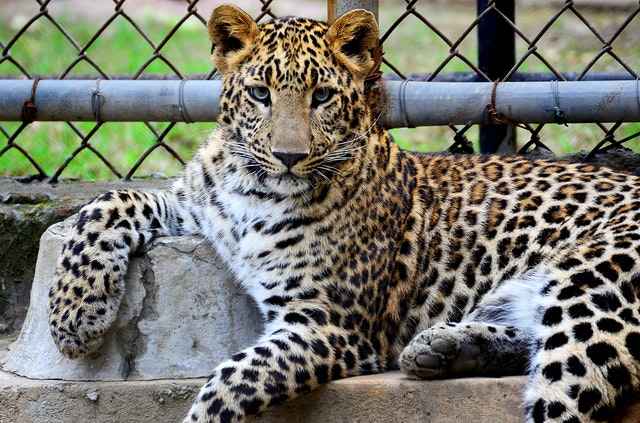
Cheetah Leopard Hybrid?
According to African folklore, cheetahs and leopards mate, creating a hybrid with the speed of a cheetah and the strength of the latter. Although there isn’t any proof of this hybrid ever existing.
The King Cheetah was suspected of being such a species, but this was soon debunked by experts.
Some say, the 2 are genetically similar enough for a hybrid to be possible. They have theorised, if the two are brought up together in captivity and left to mate, it could be possible.
This has been met with ridicule from others, who claim cross breeding would not be possible. Cheetahs are naturally smaller and slender. They would be unable to carry large cubs, or give birth to them
Female cheetahs mate with several males in order to have a litter. A leopardess has only 1. So, they suspect a Leopard’s sperm couldn’t fertilize the cheetah’s eggs.
The first recorded instance of cross breeding in big cats occurred in Windsor, England in 1824. They successfully mated an African Lion with an Asian Tigress. The latter gave birth to three hybrid cubs or ‘ligers’.
They were then presented to his Majesty.
Cannibalism
Cheetahs killing each other over territory, a female, or for any other reason is relatively rare but does happen. The act of cannibalism though, is almost unheard of. Even in the rare times they do kill each other, seldom do they eat the corpse of their fallen opponent.
Leopards taking part in cannibalism is also rare but has been documented. Infanticide in the animal kingdom is common & leopards are prone to this behaviour. This is when an unrelated male will kill cubs, usually when it takes over new territory. The leopard will hope it will bring the female back into season and allow him to breed his own cubs with her.
Not all Leopards partake in this brutal behaviour. Some bond with the females & their young. The fathers are known to defend their young at all costs.
- Leopards make a loud raspy coughing noise to alert others they are in the area.
Black Panthers
In theory, ‘black panthers’ don’t actually exist. That is, they are not an actual species of big cat. They are simply a species of big cat which has a black coat. The black jaguars in South America and black Leopards in Africa & Asia for example.
The black is caused by a dominant allele in the jaguar’s fur and recessive in the leopards. When in the light the spots on the fur can be visible, not jet black as usually depicted on TV.
Related Questions
What animal is the strongest of The Big 5?
Pound for pound, Leopards are the strongest of all the big cats.
How long do Cheetahs and Leopards live?
In the wild Cheetahs live to around 10 to 12 years, in captivity it can be over 20 years. Leopards usually live to around 15 years of age.
What do you call a female leopard?
A female leopard is called a leopardess.
What is the largest big cat?
The largest is the Siberian Tiger that can grow up to 10 feet in length and weigh 660 pounds!
What big cat has the loudest roar?
The lion of course. The roar can be heard up to 8km away.
In Conclusion, Due to Cheetahs living in extremely similar habitats as leopards this could be a reason why they have evolved to have extremely similar Prints to help them blend in – With Cheetah Print being a simple solid dots , vs Leopard Print being rosette shaped spots.

